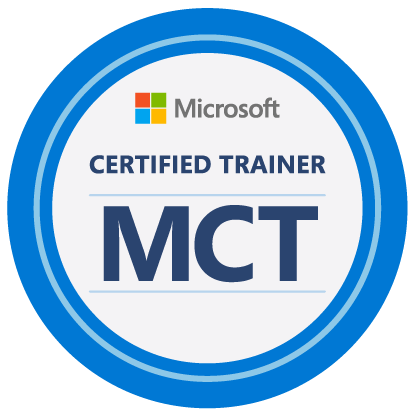SharePoint 2010: Leveraging HTML5 Objects in SharePoint
SharePoint 2010: Creating Document Sets Programmatically
SharePoint 2010: Programmatically Finding Tagged Items
SharePoint 2010: Developing AJAX-Enabled Web Parts
SharePoint 2010: Using JavaScript to Enable Notifications
SharePoint 2010: Creating Taxonomies Programmatically
SharePoint 2010: Developing List Definitions
SharePoint 2010: Managing Document Sets Programmatically
SharePoint 2010: Using JavaScript and CAML to Query Lists
SharePoint 2010: Developing JQuery-Enabled Web Parts
SharePoint 2010: Creating Content Types Programmatically
SharePoint 2010: Using JavaScript to Create Lists
SharePoint 2010: Developing Styled Master Pages
SharePoint 2010: Developing Delegate Controls
SharePoint 2010: Performing Cross-List Queries
SharePoint 2010: Using JavaScript to Edit and Save Values in Items
SharePoint 2010: Using JavaScript to Get Details About Site Collections
SharePoint 2010: Using JavaScript to Show Dialog Boxes
SharePoint 2010: Developing Connected Web Parts
SharePoint 2010: Developing Connected Silverlight Web Parts
SharePoint 2010: Developing Application Pages
SharePoint 2010: Programmatically Reading User Profile Properties
SharePoint 2010: Displaying User Profile Pictures Programmatically
SharePoint 2010: Developing Event Receivers
SharePoint 2010: Using REST to Obtain Excel Charts
SharePoint 2010: Creating Custom Timer Jobs
SharePoint 2010: Creating List Items from Silverlight
SharePoint 2010: Retrieving Single List Items in REST Requests
SharePoint 2010: Developing Starter Master Pages
SharePoint 2010: Working with Disposable Objects
SharePoint 2010: Displaying Video Files Stored in Azure
SharePoint 2010: Logging Site Events Programmatically
SharePoint 2010: Calling RESTful SharePoint Services From Desktop Applications
SharePoint 2010: Using JavaScript to Delete Items from Lists
SharePoint 2010: Uploading SharePoint Library Content to Azure Storage
SharePoint 2010: Using JavaScript to Get Details About Sites
SharePoint 2010: Using JavaScript to Retrieve and Interrogate Items in Lists
SharePoint 2010: Querying SQL Azure Data from Web Parts
SharePoint 2010: Developing Feature Receivers
SharePoint 2010: Developing Custom Navigation Providers
SharePoint 2010: Developing Workflow Activities
SharePoint 2010: Calling Azure Services from Custom Workflow Activities
SharePoint 2010: Using REST to Discover the Contents of Excel Worksheets
SharePoint Online: Authenticating Using the Client-Side Object Model
SharePoint 2010: Creating Custom Field Types
SharePoint 2010: Calling Azure Services from Web Parts
SharePoint 2010: Developing State Machine Workflows
SharePoint 2010: Canceling Synchronous Events
SharePoint 2010: Using JavaScript to Update Site Properties
SharePoint 2010: Developing Sequential Workflows
SharePoint 2010: Calling Azure Services from Timer Jobs
SharePoint 2010: Using REST to Query Data Ranges in Excel Worksheets
SharePoint 2010: Retrieving List Contents and Parsing Atom Responses
SharePoint 2010: Developing Web Templates
SharePoint 2010: Declaring Records Programmatically
SharePoint 2010: Performing Cached Cross-Site Queries
SharePoint 2010: Creating Content Organizer Rules Programmatically
SharePoint 2010: Developing Custom Expiration Actions
SharePoint 2010: Developing Custom Expiration Formulae
SharePoint Online: Creating Excel Worksheets by Using Excel Web App
SharePoint 2010: Using JQuery to Retrieve List Contents in JSON
SharePoint 2010: Logging Data to the Developer Dashboard
SharePoint 2010: Creating SQL Azure Records from Web Parts
SharePoint 2010: Developing Page Layouts
SharePoint 2010: Calling WCF Services from Timer Jobs
SharePoint 2010: Accessing SharePoint Lists from External WCF Services
SharePoint Online: Accessing Web Services
SharePoint 2010: Performing Searches from Silverlight
SharePoint Online: Creating and Deploying Sandboxed Web Parts
SharePoint 2010: Calling Azure Services from Event Receivers
SharePoint 2010: Using LINQ in REST Requests
SharePoint 2010: Creating Custom SharePoint Service Applications
SharePoint 2010: Calling WCF Services from Web Parts
SharePoint 2010: Accessing List Items from Silverlight
SharePoint Online: Deploying Sandboxed Content Types and List Definitions
SharePoint 2010: Developing Editor Web Parts
SharePoint 2010: Importing Content by Using the Content Deployment API
SharePoint 2010: Developing Custom Field Controls
SharePoint 2010: Using REST to Create a SharePoint and Bing Maps Mashup
SharePoint 2010: Developing Ribbon Drop Down Controls
SharePoint Online: Creating and Deploying Sandboxed Event Receivers
SharePoint 2010: Developing Branded Media Controls
SharePoint 2010: Calling WCF Services Hosted in SharePoint
SharePoint 2010: Developing Site Definitions
SharePoint 2010: Developing Solution Validators
SharePoint Online: Accessing Current User Information in Sandboxed Solutions
SharePoint 2010: Creating Items in Lists from External WCF Services
SharePoint Online: Creating and Deploying Sandboxed Feature Receivers
SharePoint 2010: Deleting SQL Azure Records from Web Parts
SharePoint 2010: Updating SQL Azure Records from Web Parts
SharePoint 2010: Developing Sandboxed Web Parts
SharePoint 2010: Deleting Items in Lists from External WCF Services
SharePoint 2010: Performing Searches from Web Parts
SharePoint 2010: Retrieving List Contents in JSON Format and Parsing Responses
SharePoint 2010: Calling WCF Services from Event Receivers
SharePoint 2010: Exporting Content by Using the Content Deployment API
SharePoint 2010: Developing Ribbon Actions
SharePoint Online: Creating and Deploying Sandboxed Workflow Activities
SharePoint 2010: Calling WCF Services from Custom Workflow Activities
SharePoint Online: Creating Documents Using Word, PowerPoint, or OneNote Web App
Source : http://code.msdn
SharePoint 2010: Creating Document Sets Programmatically
SharePoint 2010: Programmatically Finding Tagged Items
SharePoint 2010: Developing AJAX-Enabled Web Parts
SharePoint 2010: Using JavaScript to Enable Notifications
SharePoint 2010: Creating Taxonomies Programmatically
SharePoint 2010: Developing List Definitions
SharePoint 2010: Managing Document Sets Programmatically
SharePoint 2010: Using JavaScript and CAML to Query Lists
SharePoint 2010: Developing JQuery-Enabled Web Parts
SharePoint 2010: Creating Content Types Programmatically
SharePoint 2010: Using JavaScript to Create Lists
SharePoint 2010: Developing Styled Master Pages
SharePoint 2010: Developing Delegate Controls
SharePoint 2010: Performing Cross-List Queries
SharePoint 2010: Using JavaScript to Edit and Save Values in Items
SharePoint 2010: Using JavaScript to Get Details About Site Collections
SharePoint 2010: Using JavaScript to Show Dialog Boxes
SharePoint 2010: Developing Connected Web Parts
SharePoint 2010: Developing Connected Silverlight Web Parts
SharePoint 2010: Developing Application Pages
SharePoint 2010: Programmatically Reading User Profile Properties
SharePoint 2010: Displaying User Profile Pictures Programmatically
SharePoint 2010: Developing Event Receivers
SharePoint 2010: Using REST to Obtain Excel Charts
SharePoint 2010: Creating Custom Timer Jobs
SharePoint 2010: Creating List Items from Silverlight
SharePoint 2010: Retrieving Single List Items in REST Requests
SharePoint 2010: Developing Starter Master Pages
SharePoint 2010: Working with Disposable Objects
SharePoint 2010: Displaying Video Files Stored in Azure
SharePoint 2010: Logging Site Events Programmatically
SharePoint 2010: Calling RESTful SharePoint Services From Desktop Applications
SharePoint 2010: Using JavaScript to Delete Items from Lists
SharePoint 2010: Uploading SharePoint Library Content to Azure Storage
SharePoint 2010: Using JavaScript to Get Details About Sites
SharePoint 2010: Using JavaScript to Retrieve and Interrogate Items in Lists
SharePoint 2010: Querying SQL Azure Data from Web Parts
SharePoint 2010: Developing Feature Receivers
SharePoint 2010: Developing Custom Navigation Providers
SharePoint 2010: Developing Workflow Activities
SharePoint 2010: Calling Azure Services from Custom Workflow Activities
SharePoint 2010: Using REST to Discover the Contents of Excel Worksheets
SharePoint Online: Authenticating Using the Client-Side Object Model
SharePoint 2010: Creating Custom Field Types
SharePoint 2010: Calling Azure Services from Web Parts
SharePoint 2010: Developing State Machine Workflows
SharePoint 2010: Canceling Synchronous Events
SharePoint 2010: Using JavaScript to Update Site Properties
SharePoint 2010: Developing Sequential Workflows
SharePoint 2010: Calling Azure Services from Timer Jobs
SharePoint 2010: Using REST to Query Data Ranges in Excel Worksheets
SharePoint 2010: Retrieving List Contents and Parsing Atom Responses
SharePoint 2010: Developing Web Templates
SharePoint 2010: Declaring Records Programmatically
SharePoint 2010: Performing Cached Cross-Site Queries
SharePoint 2010: Creating Content Organizer Rules Programmatically
SharePoint 2010: Developing Custom Expiration Actions
SharePoint 2010: Developing Custom Expiration Formulae
SharePoint Online: Creating Excel Worksheets by Using Excel Web App
SharePoint 2010: Using JQuery to Retrieve List Contents in JSON
SharePoint 2010: Logging Data to the Developer Dashboard
SharePoint 2010: Creating SQL Azure Records from Web Parts
SharePoint 2010: Developing Page Layouts
SharePoint 2010: Calling WCF Services from Timer Jobs
SharePoint 2010: Accessing SharePoint Lists from External WCF Services
SharePoint Online: Accessing Web Services
SharePoint 2010: Performing Searches from Silverlight
SharePoint Online: Creating and Deploying Sandboxed Web Parts
SharePoint 2010: Calling Azure Services from Event Receivers
SharePoint 2010: Using LINQ in REST Requests
SharePoint 2010: Creating Custom SharePoint Service Applications
SharePoint 2010: Calling WCF Services from Web Parts
SharePoint 2010: Accessing List Items from Silverlight
SharePoint Online: Deploying Sandboxed Content Types and List Definitions
SharePoint 2010: Developing Editor Web Parts
SharePoint 2010: Importing Content by Using the Content Deployment API
SharePoint 2010: Developing Custom Field Controls
SharePoint 2010: Using REST to Create a SharePoint and Bing Maps Mashup
SharePoint 2010: Developing Ribbon Drop Down Controls
SharePoint Online: Creating and Deploying Sandboxed Event Receivers
SharePoint 2010: Developing Branded Media Controls
SharePoint 2010: Calling WCF Services Hosted in SharePoint
SharePoint 2010: Developing Site Definitions
SharePoint 2010: Developing Solution Validators
SharePoint Online: Accessing Current User Information in Sandboxed Solutions
SharePoint 2010: Creating Items in Lists from External WCF Services
SharePoint Online: Creating and Deploying Sandboxed Feature Receivers
SharePoint 2010: Deleting SQL Azure Records from Web Parts
SharePoint 2010: Updating SQL Azure Records from Web Parts
SharePoint 2010: Developing Sandboxed Web Parts
SharePoint 2010: Deleting Items in Lists from External WCF Services
SharePoint 2010: Performing Searches from Web Parts
SharePoint 2010: Retrieving List Contents in JSON Format and Parsing Responses
SharePoint 2010: Calling WCF Services from Event Receivers
SharePoint 2010: Exporting Content by Using the Content Deployment API
SharePoint 2010: Developing Ribbon Actions
SharePoint Online: Creating and Deploying Sandboxed Workflow Activities
SharePoint 2010: Calling WCF Services from Custom Workflow Activities
SharePoint Online: Creating Documents Using Word, PowerPoint, or OneNote Web App
Source : http://code.msdn






%20(1).webp)
